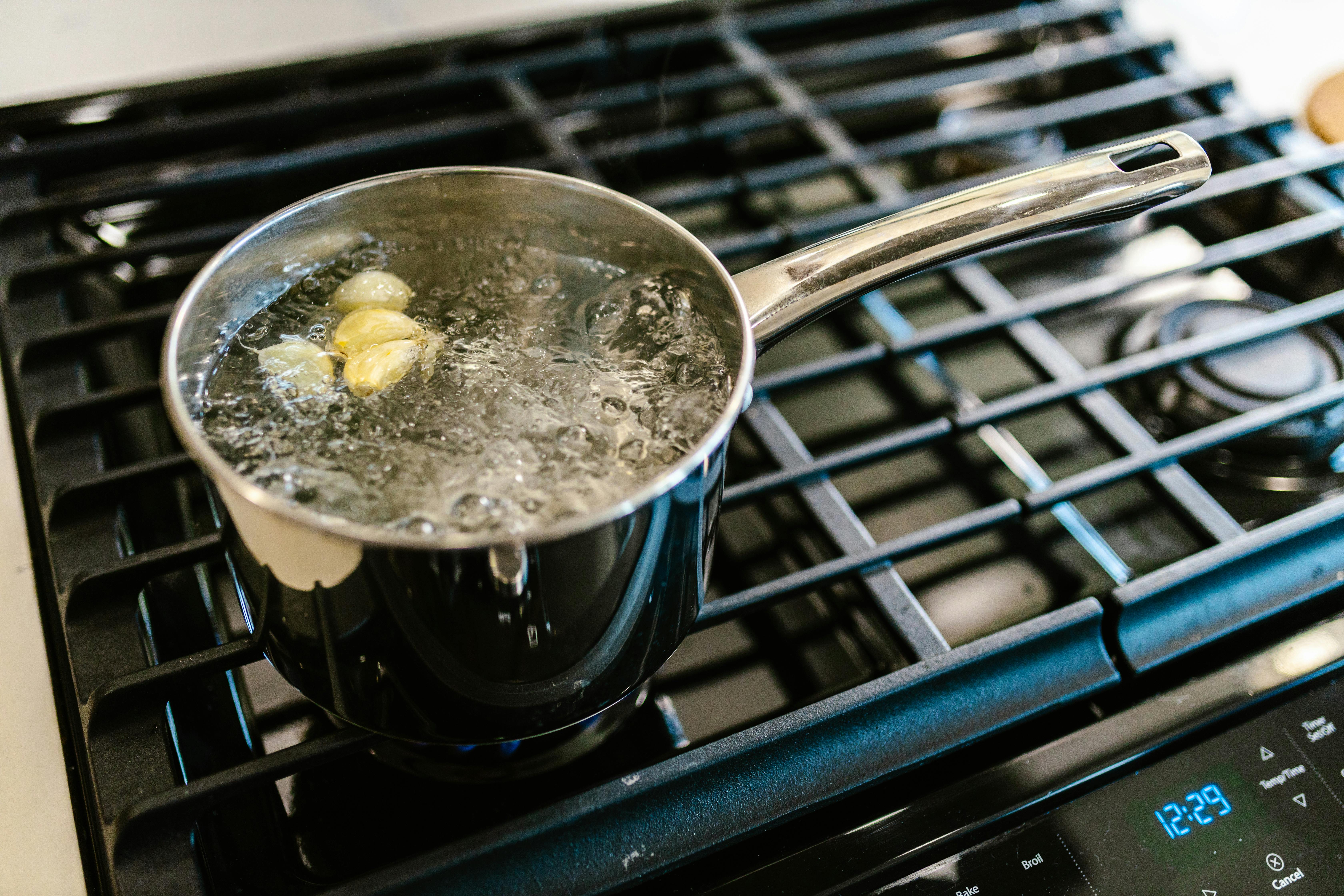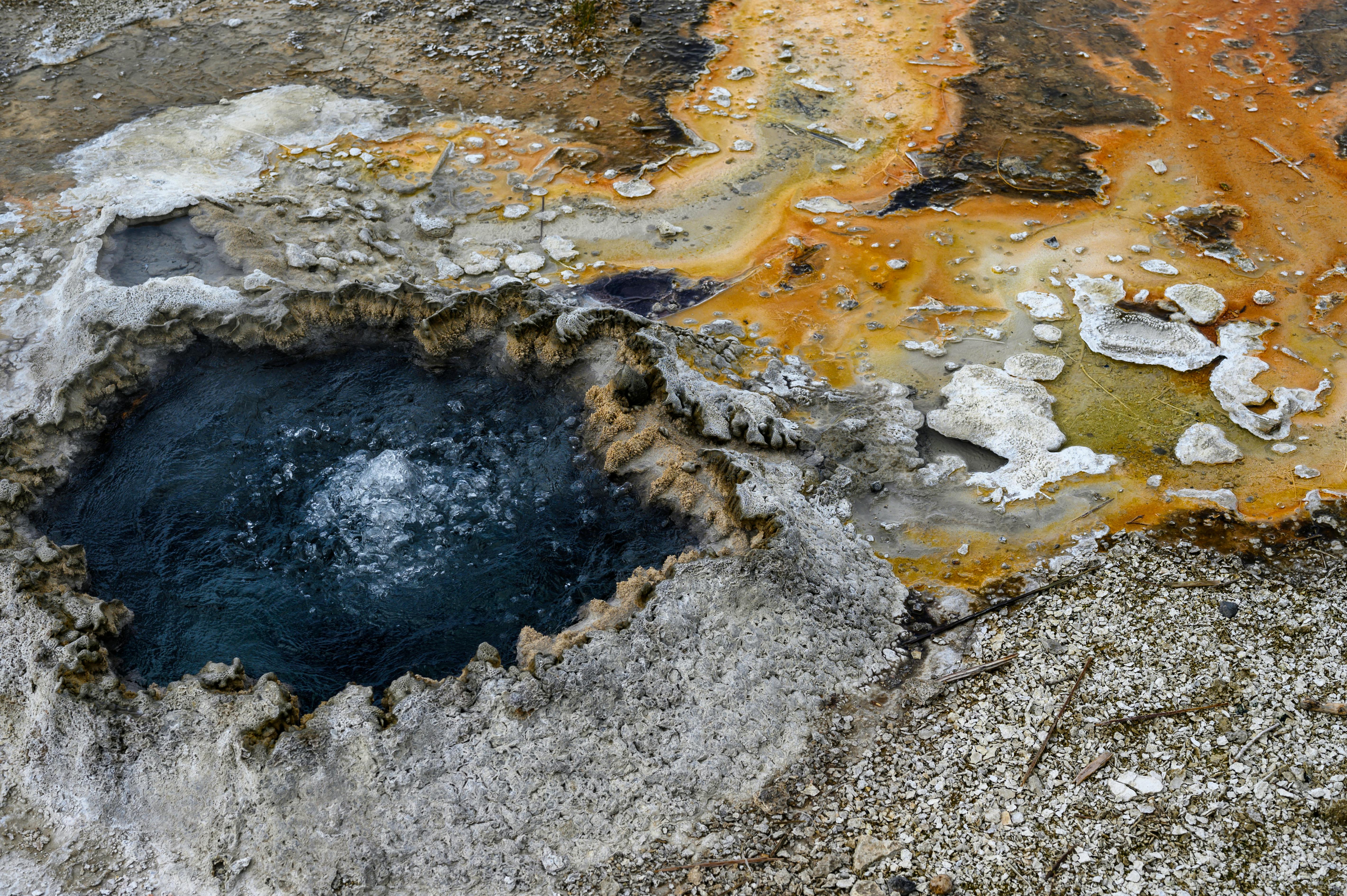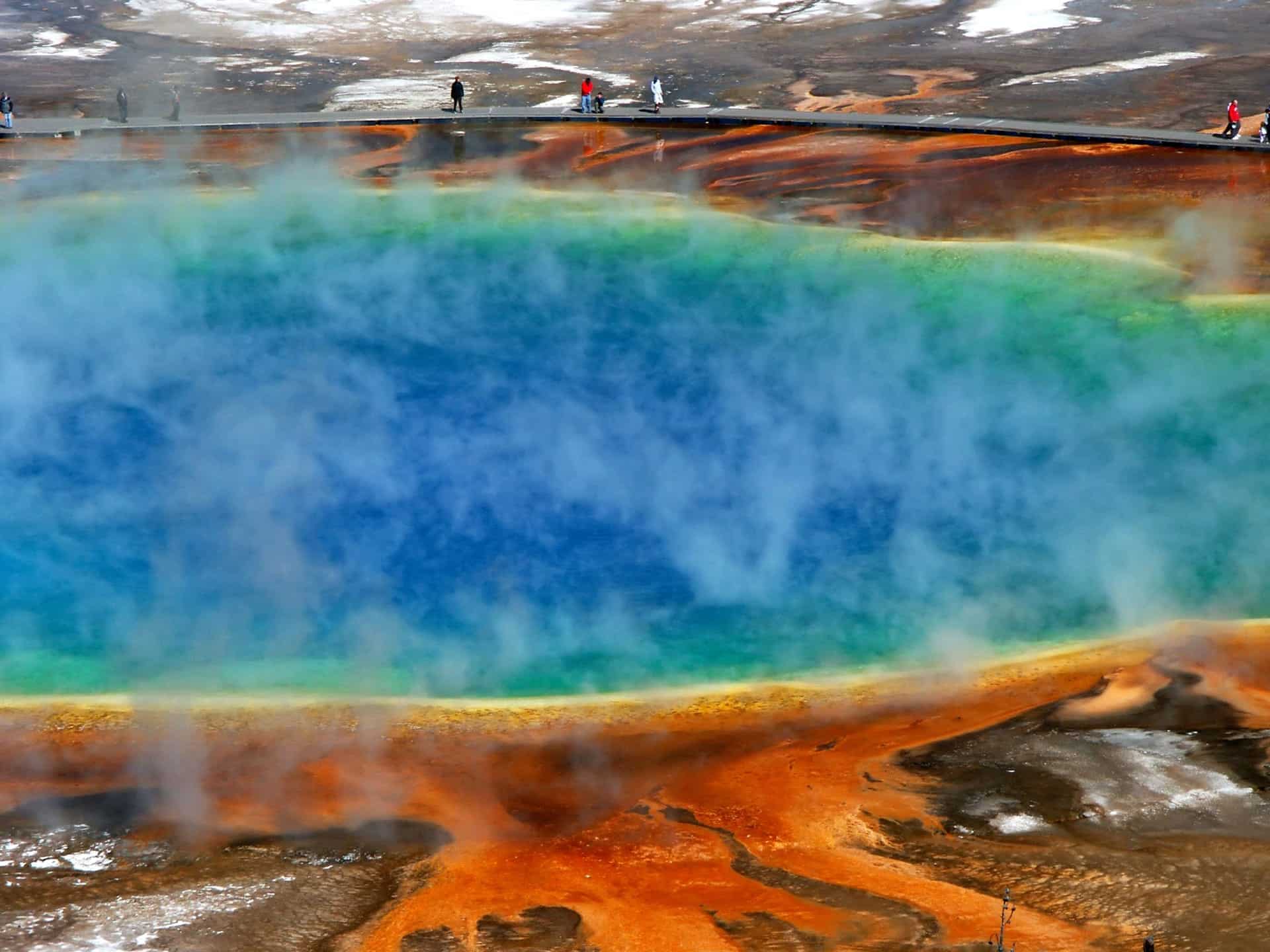Boiling water is a very common process that can be used for many different purposes. It is important to understand if the boiling process is endothermic or exothermic in order to understand the energy requirements and effects of this process. Endothermic processes require energy to occur while exothermic processes release energy. So, is boiling water endothermic or exothermic?Endothermic reactions are chemical reactions that absorb energy in the form of heat. Examples of endothermic reactions include photosynthesis, melting of ice and dissolution of ammonium nitrate in water.
Exothermic reactions are chemical reactions that release energy in the form of heat. Examples of exothermic reactions include burning of fuels, rusting of iron and neutralization reaction between an acid and a base.
What Happens When Water Boils?
When water is heated, it reaches a temperature at which it boils and turns to steam. Boiling water is a process in which liquid water is converted to water vapor, or steam. Boiling occurs when the molecules in the liquid have enough energy to break their bonds and escape into the atmosphere as gas molecules. The temperature at which this occurs is known as the boiling point, and it is dependent on the pressure of the environment. At sea level, water boils at 100°C (212°F).
When water boils, air bubbles form on the bottom of the pot or container being heated and rise to the surface, carrying with them small amounts of liquid. This foam contains mostly air bubbles but may also contain small droplets of liquid that were entrained in them before they reached the surface. As more heat energy is added to the liquid, more bubbles form and rise faster, resulting in vigorous bubbling.
The amount of energy needed for boiling depends on how much liquid there is in a pot or container. The more volume of liquid there is, the more heat energy must be added for it to reach its boiling point and turn into steam. This means that larger pots take longer to boil than smaller ones because they hold more liquid that must be heated up before it can reach its boiling point.
Water boiling can also be used to sterilize objects such as surgical instruments or drinking utensils by killing any bacteria or other microorganisms present on their surfaces. Boiling not only kills bacteria but can also remove dirt and debris from objects through a process called “flash evaporation.” In this process, some of the dirt particles become airborne when exposed to high temperatures created by boiling water and are removed from an object’s surface when they evaporate quickly.
Boiling Water Releases Energy
When water is heated, it absorbs energy from its surroundings. As the temperature of the water increases, some of this energy is converted into kinetic energy, causing the molecules in the water to move faster and faster. When the temperature of the water reaches its boiling point, 100°C (212°F), these molecules are moving so fast that they break away from each other and become vaporized, turning from a liquid into a gas. This process is known as boiling and it releases energy in the form of heat.
The amount of energy released when a given amount of water boils depends on how much heat is required to raise its temperature to boiling point. In general, it takes about 180 joules (J) to raise one gram (g) of water by 1°C. So when boiling one liter (L) of water (which weighs 1 kilogram [kg]), it takes 180,000 J or 180 kilojoules (kJ). This energy is released as heat that can be used for a variety of applications such as heating homes or cooking food.
What Causes the Temperature Change During the Boiling Process?
The boiling process is a physical change in which a liquid is heated until it reaches its boiling point, which turns it into a gas. This change in state occurs when the vapor pressure of the liquid exceeds the atmospheric pressure. During this process, the temperature of the liquid rises steadily until it reaches its boiling point, and then remains constant until all of the liquid has evaporated.
The temperature increase during boiling is caused by two factors: heat of vaporization and heat capacity. Heat of vaporization is the amount of energy that must be supplied to a liquid in order for it to change from a liquid to a gas. As more and more molecules escape from the surface of the liquid, they require more and more energy to do so. This energy is provided by heat, which comes from either an external source or from within the liquid itself.
Heat capacity is another factor that contributes to temperature changes during boiling. Heat capacity is defined as the amount of energy required to raise or lower the temperature of one unit mass by one degree Celsius or Kelvin. As more energy is supplied to a substance (in this case, a liquid), its temperature increases because it can absorb more energy before reaching its boiling point.
In conclusion, both heat of vaporization and heat capacity are responsible for causing an increase in temperature during boiling. Heat of vaporization provides energy for molecules to escape from their surface and enter into the gas phase while heat capacity allows for absorption of additional energy before reaching its boiling point.
Boiling Water: Endothermic or Exothermic Process?
Boiling water is a form of energy transfer that occurs when heat is added to liquid water, causing it to change into steam or vapor. The process of boiling water is an endothermic reaction, meaning that it requires energy to be put into the system in order to make it happen. Heat energy enters the system and causes the molecules of water to vibrate and break apart so that they can escape as steam. This process absorbs energy from the environment, making it an endothermic reaction.
The amount of energy required for boiling water depends on how much water needs to be boiled and how hot it needs to be heated. Generally, more energy is required when heating a larger volume of water or when attempting to heat the water to a higher temperature. The boiling point of water also varies depending on atmospheric pressure and altitude.
Once the water has reached its boiling point, its temperature will remain constant until all of the liquid has been converted into vapor. This temperature remains constant even if additional heat is applied because the endothermic reaction absorbs all of the extra energy that is added.
In summary, boiling water is an endothermic process which requires energy in order for it to take place. The amount of energy required depends on how much liquid needs to be boiled and how hot it needs to be heated; however, once boiling has begun, the temperature will remain constant until all of the liquid has been converted into vapor.

How Does Boiling Water Affect the Environment?
Boiling water has a direct impact on the environment, as it can contaminate water sources and affect air quality. Boiling water increases the amount of energy used, which in turn increases emissions of carbon dioxide and other pollutants. Additionally, boiling water can lead to thermal pollution due to increased temperatures in rivers and other bodies of water, which can harm aquatic life. Boiling water can also cause air pollution if done improperly or in large quantities, as it may release particles into the atmosphere. Consequently, boiling water should always be done with caution and consideration of its environmental effects.
The most evident environmental effect of boiling water is its contribution to thermal pollution. As the temperature of rivers and lakes rises due to the disposal of heated wastewater or runoff from power plants that use steam for electricity generation, aquatic life is impacted negatively because they are adapted to certain temperatures and oxygen levels in their environment. This thermal pollution leads to decreased oxygen levels, which may result in fish kills or algal blooms that further disrupts aquatic ecosystems.
Boiling water also produces air pollution when done improperly or in large quantities. For instance, when burning biomass for energy production or domestic use such as cooking or heating, particulate matter like soot may be released into the atmosphere if proper ventilation is not ensured. This type of air pollution has been linked to various health problems such as respiratory illnesses and heart disease. In addition, burning fossil fuels for energy production leads to emissions of greenhouse gases like carbon dioxide (CO2) and methane (CH4), which contribute to climate change by trapping heat within the atmosphere.
In conclusion, boiling water has a direct impact on the environment by leading to thermal pollution in bodies of water and air pollution when done improperly or in large quantities. Therefore, it is important that boiling water be done with caution and consideration for its environmental effects so that we can protect our planet’s delicate ecosystems while still utilizing this important process.
The Benefits of Boiling Water
Boiling water is one of the safest ways to make water safe for drinking. It is an effective way to kill bacteria and other microorganisms that can contaminate it. Boiling water can also help remove impurities from the water, such as dirt, sediment, and chemicals. Boiling water is also an inexpensive way to make drinking water safer, as it does not require any specialized equipment or chemicals.
In addition to making drinking water safer, boiling water has other benefits as well. For instance, boiling can be used to preserve food by killing bacteria that cause food spoilage. Boiled water can also be used for cooking and preparing foods, such as rice and pasta, which may be contaminated with bacteria or other contaminants that can cause illness if consumed without proper preparation.
Boiling can also be used for cleaning purposes. For example, boiling can be used to sanitize dishes and utensils that may have been contaminated by bacteria or other germs. Boiled water can also be used for cleaning surfaces in the kitchen and bathroom, such as countertops and sinks.
Finally, boiling can be used to purify wastewater before it is released into the environment. Wastewater contains many pollutants that can harm aquatic life if released untreated into a body of water. Boiling wastewater before release helps reduce the amount of pollutants present in the wastewater and makes it safer for aquatic life.
Overall, boiling water is a simple yet effective way to make drinking water safer, preserve food, clean surfaces, and purify wastewater before release into the environment.
Is It Safe to Drink Boiled Water?
Yes, boiling water is a safe and effective way to purify water. Boiling is the foremost method suggested by public health organizations for making water safe to drink. Boiling kills harmful bacteria, viruses, and parasites by heating the water to a temperature that destroys them. It is important to note that boiling will not remove any chemicals or heavy metals from water, so if contaminants are present, boiling will not make the water safe.
Boiled water should be cooled down before drinking it in order to avoid burns. Boiling also removes dissolved gases like chlorine and sulfur which can give water a bad taste and odor. Boiling for several minutes will also improve the taste of the water. Once boiled, let the water cool down before pouring into a clean container with a lid and refrigerate if possible.
It is important to note that while boiling can make most bacteria and viruses inactive, it will not remove them completely from the water—they may still be present but in smaller numbers. Therefore, it is important to filter or strain the boiled water through a clean cloth before drinking it or using it for cooking.
Overall, boiling is an effective way to make your drinking water safe when no other options are available. It is important that you use clean containers and strainers when collecting your boiled drinking water in order to ensure that you are getting rid of any contaminants that may be present.

Conclusion
Boiling water is an exothermic process because it releases energy in the form of heat. This energy is released as the water molecules break their hydrogen bonds and eventually turn into steam. The heat released during boiling is what causes the water to change from a liquid to a gas.
Boiling water can also be thought of as an endothermic reaction, since it requires energy in order to break the hydrogen bonds that hold the molecules together. This energy is supplied from either an external source, such as a stove or hot plate, or from the surrounding environment.
In summary, boiling water is both an exothermic and endothermic process depending on how it is viewed. From an exothermic perspective, energy is released as the water changes state from liquid to gas. On the other hand, when viewed endothermically, energy needs to be supplied in order to break the hydrogen bonds and cause boiling.

